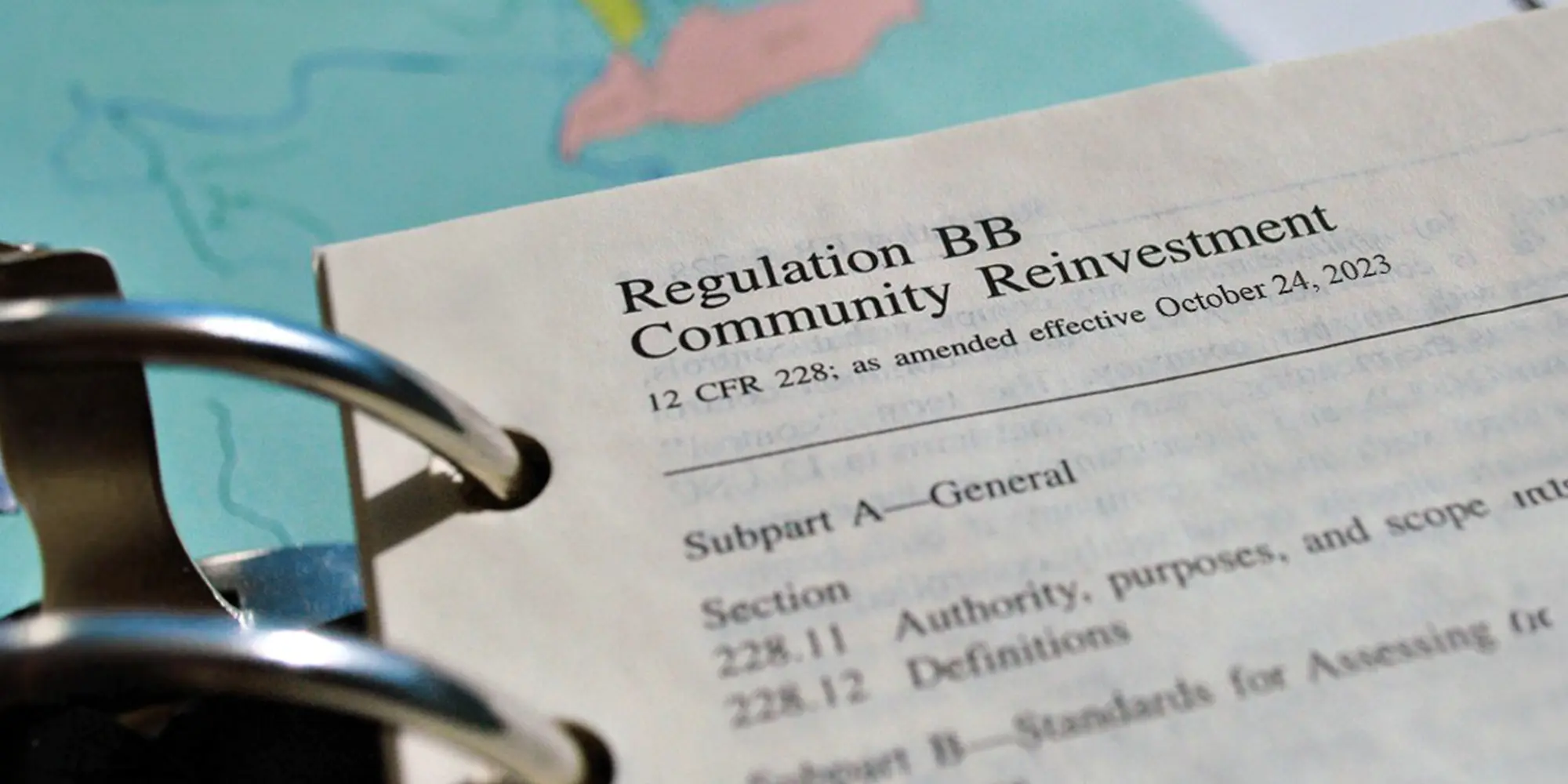The murder of George Floyd and the protests that followed during the summer of 2020 inspired a $200 billion flood of financial commitments by companies and philanthropic institutions to fight racial injustice. The lion's share of the giving—90% of pledged funds—came from financial services firms, largely in the form of loans and investments made in low- to moderate-income communities.
Almost three years after Floyd’s death, there is still skepticism largely tied to the mistrust that decades of predatory lending practices and discriminatory housing policies have created in underprivileged communities.
This presents difficult challenges: How can institutions demonstrate the value of their social justice initiatives? How can they explain their approach with hard data? And how can they build trust in vulnerable communities?
Questions Behind the Questions
For decades, financial institutions have followed the lead of regulatory agencies to determine the level and direction of their community investments. The Community Reinvestment Act (CRA), the most important regulatory program addressing financial institutions’ community investments, was passed by Congress in 1977 to curb redlining and other discriminatory housing practices. At the time, it represented a real advance in the country's willingness to address historical wrongs against marginalized communities.
However, by many measures, the guidance afforded by the CRA and other regulatory efforts has failed to make a major difference, notably "zero progress” in homeownership among lower-income and minority communities. The fact that financial institutions themselves were inspired by the 2020 protests to commit billions of dollars to address systemic inequities proves the point: the industry’s biggest players recognized that they needed to develop new responses to community vulnerability. Achieving an outstanding CRA assessment is no longer enough, even by the industry's own standards.
Federal regulatory agencies have started the rulemaking process to overhaul the CRA to be more responsive to the communities it was intended to serve. Legislators are also proposing to amend the law. To help financial services companies defend and advance their community investments, we first need to ask different, more fundamental questions: How do institutions know that their commitments will make a difference? How do they measure success? And how do they inform vulnerable communities and a multitude of stakeholders about their accomplishments?
That’s where the data comes in.
The prime metric for CRA assessments is median family income within the bank's operational area. It's a fine approach for legislation written more than four decades ago, but today it offers only the broadest insights when considered on its own. Take an individual census tract within a CRA assessment area: Because of the pervasive effects of income inequality, even a tract with a low median family income can encompass households of varying income levels. Simply increasing lending within a low-income census tract may not help low-income households directly. Additionally, household income levels may gloss over important additional factors that can provide invaluable guidance for targeting which areas will benefit from investment the most.
Go Deeper with Data
The Ichor team has gathered a set of economic indicators that, when considered alongside household income, open a deeper, more specific analysis of the unique needs of neighborhoods. These measures of a region’s economic health are largely undervalued or overlooked.
- It’s critical that financial institution executives truly understand the important role non-bank cards play in vulnerable communities. Prepaid and "stored value" cards are used as an alternative to traditional financial services, especially for people who live paycheck to paycheck or who lack access to public transportation. A high rate of non-bank card use is a prime indicator of an underserved community.
- Concentrating on household income alone to direct community investment can entirely miss the effect of business growth on local economic stability. Yes, expanding businesses tend to employ more local workers, which contributes to higher household income. But some high-income areas are largely residential and have lower business growth, making business loans less effective. And business growth has other important effects, including encouraging residents to remain in their neighborhoods, attracting investors from outside the area, increasing tax revenue, and boosting infrastructure development.
- Another informative economic indicator is broadband quality. Studies have demonstrated that high-quality broadband positively affects vulnerable communities, including boosting overall employment, marketable job skills, educational opportunity, and yes, access to financial services.
- A quick glance at a community's median income will conceal the way rent, mortgage, and maintenance costs can impose real hardship on households. We factored housing burden into our analysis—the percentage of household income consumed by housing-related costs. In practice, even families with higher incomes may be saddled with high housing burdens, leading to difficulties purchasing enough quality food, the inability to pay non-housing bills, and the need to skip crucial medical care.
Ichor has blended these and other indicators to produce an overall vulnerability score for ZIP codes when compared to adjacent neighborhoods, producing a detailed map that captures the nuances of each community’s economy (see Figure 1 for Chicago example). Going deeper by recognizing these various factors means new branch locations, lending programs, and marketing campaigns can target the least affluent areas in a bank's operational sphere, rather than treating the whole area as a monolithic, uniform low-income region.
And the values for individual indicators in any given ZIP code can inspire creative and effective lending programs and service offerings. Imagine targeted grants that help nonprofits deliver broadband access in one neighborhood, while only blocks away home improvement subsidies are delivered to households burdened with high rent.
At Ichor, we believe that this new, multi-indicator approach offers fresh perspectives on how institutions can make a meaningful impact in communities.

You Can’t Prove What You Can’t Measure
Vulnerable communities’ mistrust of financial institutions isn't a consequence of recent social turmoil, it's one of its causes. The forces that provoked that mistrust are as old as banking in the United States, and the doubt and disappointment generated by the sector's efforts to address structural inequality are just their most recent symptom. And aligning with well-intentioned but archaic legislation and regulation hasn’t taken the industry far enough.
Financial services firms can do enormous good within the communities they serve. But to accomplish that good, they need to earn trust through effective commitments and clearly demonstrate their effects.
Going deeper with data allows institutions to tailor investment programs to fit the realities of individual vulnerable communities. And measuring how the effects of that engagement spread outward from each individual investment presents golden opportunities:
- Positive messaging: Marketing and communications professionals are under extraordinary pressure to boost the public profile of their company's community investments. Our new analytic approach helps them create community-specific, positive messages for marketing, recruitment, employee retention, and public relations activities.
- Getting ahead of regulation: As mentioned above, CRA reform is in the works, and some of the suggested changes will require more sophisticated data to achieve a positive assessment. Gathering nuanced and meaningful data now means fewer compliance headaches once those changes kick in.
- Enriching DEI initiatives: Diversity, equity, and inclusion programs are no longer confined to the recruitment and retention of diverse workforces; DEI initiatives are being folded into each company’s core business operations. Effective, dedicated, and marketable community investment increases the scope of DEI initiatives and makes them more meaningful.
There are enormous market opportunities for financial services firms among underserved communities. And there’s a great store of untapped, positive energy in the sector—a force that could both transform communities and enhance the bottom line.
Channeling that energy with concern and care demands only that we re-examine and go deeper with the data so that we can build an accurate, compassionate understanding of what vulnerable communities need.
Peter Wagener is Ichor’s Chief Technology Officer and is based in the Brooklyn office. He brings a wealth of technology and modern data analysis expertise, providing data-driven insights to Ichor’s clients.




